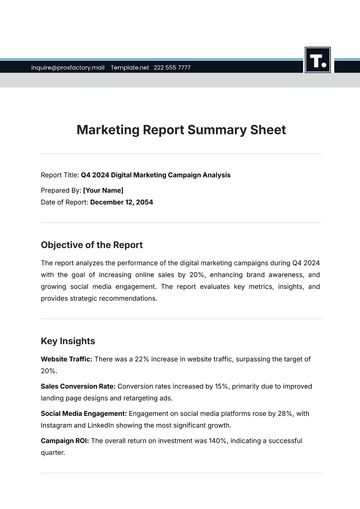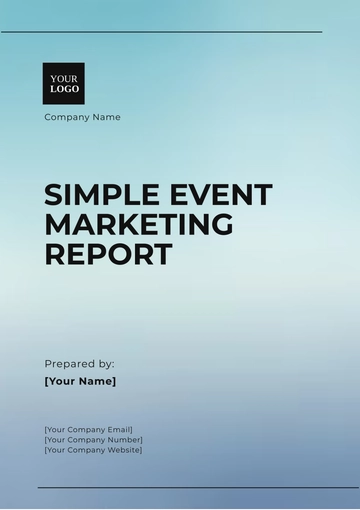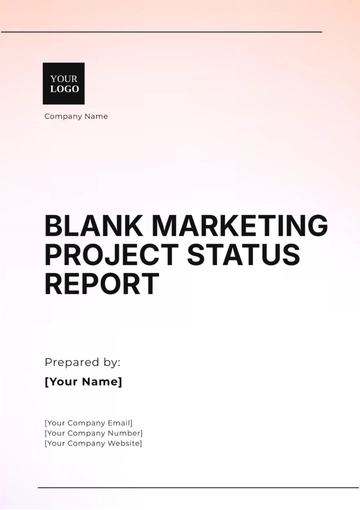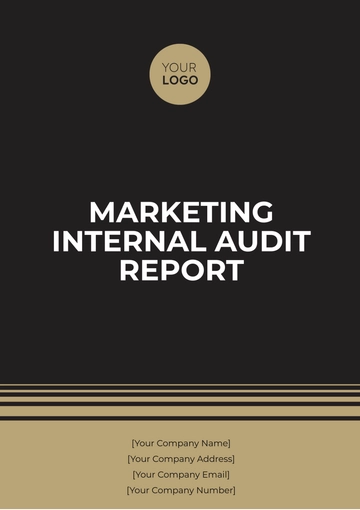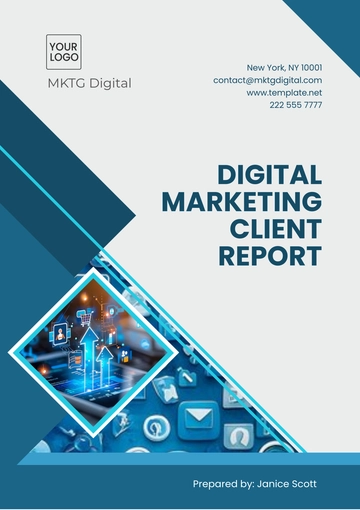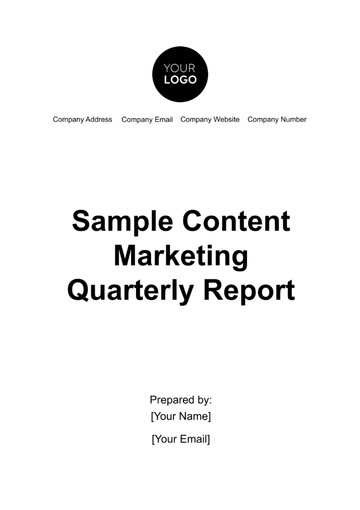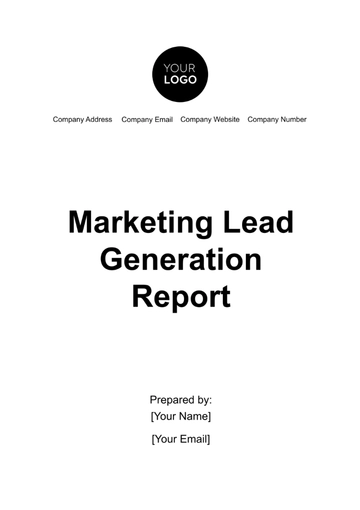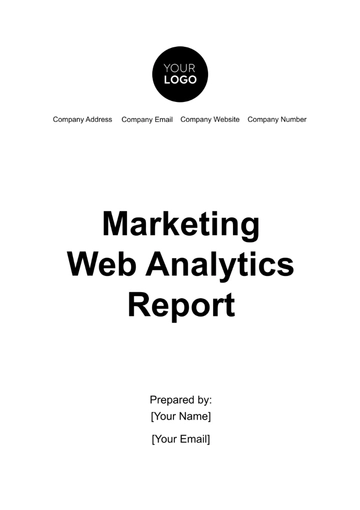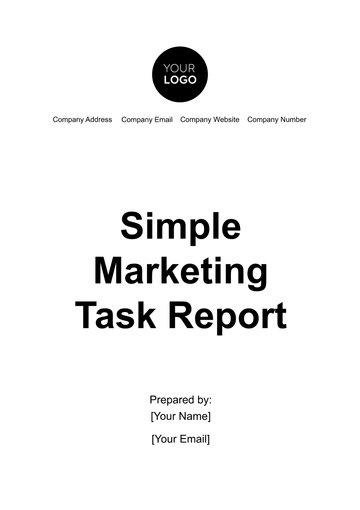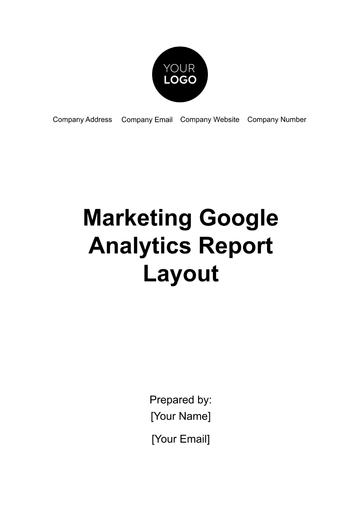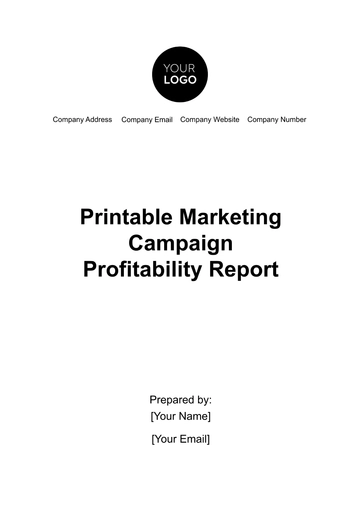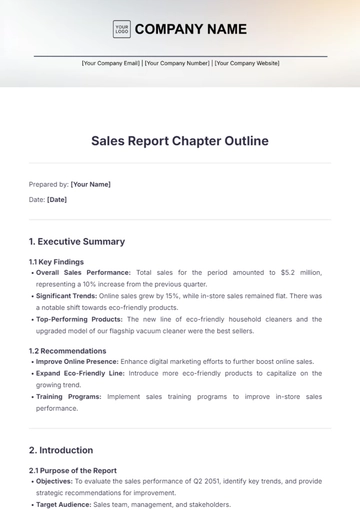Free Corporate Marketing Report

I. Executive Summary
In this section, [Your Company Name] presents a comprehensive overview of the corporate marketing strategies and initiatives undertaken in 2050. This report highlights the key achievements, challenges, and future plans to enhance [Your Company Name]'s brand presence and market reach.
II. Market Analysis
A. Market Trends
Digital Transformation: The market witnesses a significant shift towards digital platforms for marketing and consumer engagement.
Personalization: Consumers demand personalized experiences, prompting [Your Company Name] to focus on tailored marketing campaigns.
Sustainability: Environmental consciousness influences consumer behavior, driving the need for sustainable marketing practices.
B. Competitor Analysis
[Your Company Name] conducted a thorough analysis of competitors' marketing strategies, identifying areas for improvement and differentiation. Competitors such as [Competitor 1] and [Competitor 2] were benchmarked against [Your Company Name]'s marketing performance.
III. Marketing Strategy
A. Brand Positioning
[Your Company Name] emphasizes its unique value proposition, positioning itself as a leader in tech solutions. The brand message focuses on innovation, reliability, and sustainability, resonating with target audiences.
B. Target Segmentation
Demographics: Target demographics include millennials, Gen Z, and working professionals.
Psychographics: Understanding consumer behaviors and preferences enables BlueTech Solutions to tailor marketing efforts effectively.
C. Channels and Tactics
[Your Company Name] employs a multi-channel approach to reach diverse audiences:
Digital Marketing: Leveraging social media platforms, email campaigns, and search engine optimization (SEO).
Traditional Marketing: includes print media, television advertisements, and outdoor campaigns.
Content Marketing: Engaging blogs, videos, and interactive content to educate and entertain consumers.
IV. Campaign Performance
A. Metrics Overview
[Your Company Name] tracks various key performance indicators (KPIs) to measure the effectiveness of marketing campaigns:
ROI: Return on investment across different marketing channels.
Conversion Rate: Percentage of leads converted into customers.
Engagement Metrics: Likes, shares, comments, and website traffic.
B. Case Studies
[Your Company Name] showcases successful marketing campaigns, including:
Product Launch: The launch campaign for [Your Company Name]'s latest smart home device resulted in a 30% increase in sales within the first quarter of 2050.
Social Media Campaign: Influencer collaboration on Instagram led to 10,000 new followers and 500 conversions.
V. Future Outlook
A. Emerging Trends
[Your Company Name] identifies emerging trends shaping the future of marketing:
Augmented Reality (AR) Marketing: Integration of AR technology for immersive brand experiences.
Voice Search Optimization: Optimization strategies for voice-enabled devices and search engines.
AI and Machine Learning: Utilizing AI algorithms for predictive analytics and personalized recommendations.
B. Strategic Initiatives
[Your Company Name] outlines strategic initiatives to capitalize on emerging trends and maintain competitive advantage:
Investment in Technology: Upgrading marketing automation tools and analytics platforms.
Partnerships and Collaborations: Forging alliances with industry influencers and complementary brands.
Customer-Centric Approach: Enhancing customer journey mapping and personalized communication strategies.
VI. Conclusion
In conclusion, [Your Company Name] remains committed to innovating marketing strategies, adapting to market dynamics, and delivering value to customers. By leveraging data-driven insights and embracing emerging technologies, it aims to strengthen its position as a market leader in tech solutions.
- 100% Customizable, free editor
- Access 1 Million+ Templates, photo’s & graphics
- Download or share as a template
- Click and replace photos, graphics, text, backgrounds
- Resize, crop, AI write & more
- Access advanced editor
Streamline your corporate marketing analysis with Template.net's Corporate Marketing Report Template. This editable and customizable template allows you to present your data professionally and efficiently. Editable in our Ai Editor Tool, it offers flexibility and ease of use, ensuring your reports are always up-to-date and tailored to your needs. Ideal for all your corporate marketing report needs.
You may also like
- Sales Report
- Daily Report
- Project Report
- Business Report
- Weekly Report
- Incident Report
- Annual Report
- Report Layout
- Report Design
- Progress Report
- Marketing Report
- Company Report
- Monthly Report
- Audit Report
- Status Report
- School Report
- Reports Hr
- Management Report
- Project Status Report
- Handover Report
- Health And Safety Report
- Restaurant Report
- Construction Report
- Research Report
- Evaluation Report
- Investigation Report
- Employee Report
- Advertising Report
- Weekly Status Report
- Project Management Report
- Finance Report
- Service Report
- Technical Report
- Meeting Report
- Quarterly Report
- Inspection Report
- Medical Report
- Test Report
- Summary Report
- Inventory Report
- Valuation Report
- Operations Report
- Payroll Report
- Training Report
- Job Report
- Case Report
- Performance Report
- Board Report
- Internal Audit Report
- Student Report
- Monthly Management Report
- Small Business Report
- Accident Report
- Call Center Report
- Activity Report
- IT and Software Report
- Internship Report
- Visit Report
- Product Report
- Book Report
- Property Report
- Recruitment Report
- University Report
- Event Report
- SEO Report
- Conference Report
- Narrative Report
- Nursing Home Report
- Preschool Report
- Call Report
- Customer Report
- Employee Incident Report
- Accomplishment Report
- Social Media Report
- Work From Home Report
- Security Report
- Damage Report
- Quality Report
- Internal Report
- Nurse Report
- Real Estate Report
- Hotel Report
- Equipment Report
- Credit Report
- Field Report
- Non Profit Report
- Maintenance Report
- News Report
- Survey Report
- Executive Report
- Law Firm Report
- Advertising Agency Report
- Interior Design Report
- Travel Agency Report
- Stock Report
- Salon Report
- Bug Report
- Workplace Report
- Action Report
- Investor Report
- Cleaning Services Report
- Consulting Report
- Freelancer Report
- Site Visit Report
- Trip Report
- Classroom Observation Report
- Vehicle Report
- Final Report
- Software Report
